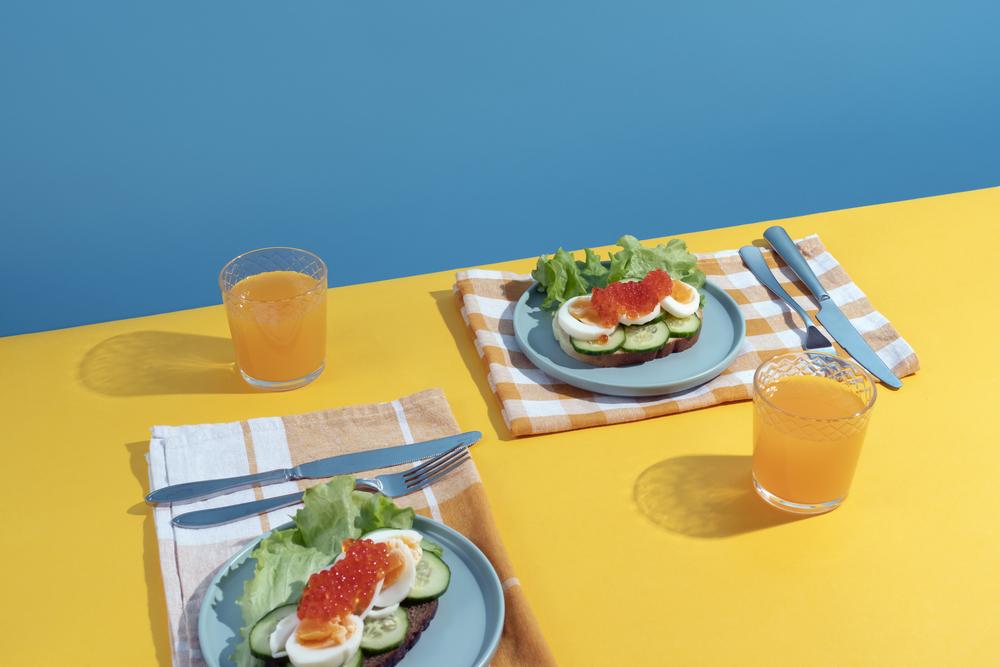Creating a balanced plate is essential for maintaining a healthy lifestyle, but it doesn't have to involve tedious calorie counting. Instead, focus on incorporating a variety of food groups to ensure you’re getting the nutrients your body needs. In this blog, we’ll explore how to build a balanced plate using simple guidelines, rich statistics, and helpful visuals. Let’s dive in! ?️

Understanding the Components of a Balanced Plate
A balanced plate typically consists of four main components: proteins, carbohydrates, healthy fats, and a variety of fruits and vegetables. Each of these components plays a crucial role in your overall health. Here’s a breakdown of what each component contributes:
- Proteins: Essential for muscle repair and growth. Aim for lean sources like chicken, fish, beans, and legumes.
- Carbohydrates: Your body’s primary energy source. Choose whole grains, fruits, and vegetables for sustained energy.
- Healthy Fats: Important for brain health and hormone production. Incorporate sources like avocados, nuts, and olive oil.
- Fruits and Vegetables: Packed with vitamins, minerals, and fiber. Aim for a colorful variety to maximize nutrient intake.
The 50-25-25 Rule
One effective way to visualize a balanced plate is by using the 50-25-25 rule. This guideline suggests that half of your plate should consist of fruits and vegetables, while the other half is divided between proteins and carbohydrates. Here’s a simple table to illustrate this concept:
| Plate Component | Percentage | Examples |
|---|---|---|
| Fruits & Vegetables | 50% | ? Broccoli, ? Strawberries, ? Carrots |
| Proteins | 25% | ? Chicken, ? Salmon, ? Eggs |
| Carbohydrates | 25% | ? Brown Rice, ? Whole Grain Bread, ? Quinoa |
The Importance of Variety
Incorporating a variety of foods not only makes your meals more enjoyable but also ensures you’re getting a wide range of nutrients. According to the CDC, only 1 in 10 adults consume enough fruits and vegetables. This statistic highlights the need for more colorful plates! ?
Nutrient Density vs. Caloric Density
When building a balanced plate, it’s essential to focus on nutrient density rather than caloric density. Nutrient-dense foods provide more vitamins and minerals per calorie, while caloric-dense foods may offer little nutritional value. Here’s a comparison table to help you understand the difference:
| Food Type | Nutrient-Dense Foods | Caloric-Dense Foods |
|---|---|---|
| Examples | ? Spinach, ? Blueberries | ? Doughnuts, ? Pizza |
| Nutritional Value | High in vitamins & minerals | High in sugars & fats |
| Health Impact | Supports overall health | May lead to weight gain |
Tips for Building Your Balanced Plate
- Start with a Base: Begin with a whole grain or leafy green as your base. This sets the stage for a nutritious meal.
- Add Color: Aim for a rainbow of fruits and vegetables. The more colors on your plate, the more nutrients you’re likely to consume! ?
- Choose Lean Proteins: Opt for grilled, baked, or steamed proteins to keep your meals healthy.
- Incorporate Healthy Fats: A drizzle of olive oil or a handful of nuts can enhance flavor and provide essential fatty acids.
- Stay Hydrated: Don’t forget to drink water! Staying hydrated is crucial for overall health.
Meal Ideas for a Balanced Plate
Here are some delicious meal ideas that follow the balanced plate guidelines:
| Meal Type | Ingredients | Balanced Plate Example |
|---|---|---|
| Breakfast | ? Avocado, ? Eggs, ? Whole Grain Toast | Avocado toast with poached eggs and a side of fruit |
| Lunch | ? Mixed Greens, ? Grilled Chicken, ? Quinoa | Grilled chicken salad with quinoa and a variety of veggies |
| Dinner | ? Whole Wheat Pasta, ? Tomato Sauce, ? Broccoli | Whole wheat pasta with tomato sauce and steamed broccoli |
Conclusion
Building a balanced plate doesn’t have to be complicated or involve counting calories. By focusing on variety and nutrient density, you can create meals that are not only healthy but also delicious. Remember, the key is to enjoy your food while nourishing your body. For more tips on healthy eating, check out resources like ChooseMyPlate.gov for additional guidance. Happy eating! ?️✨



